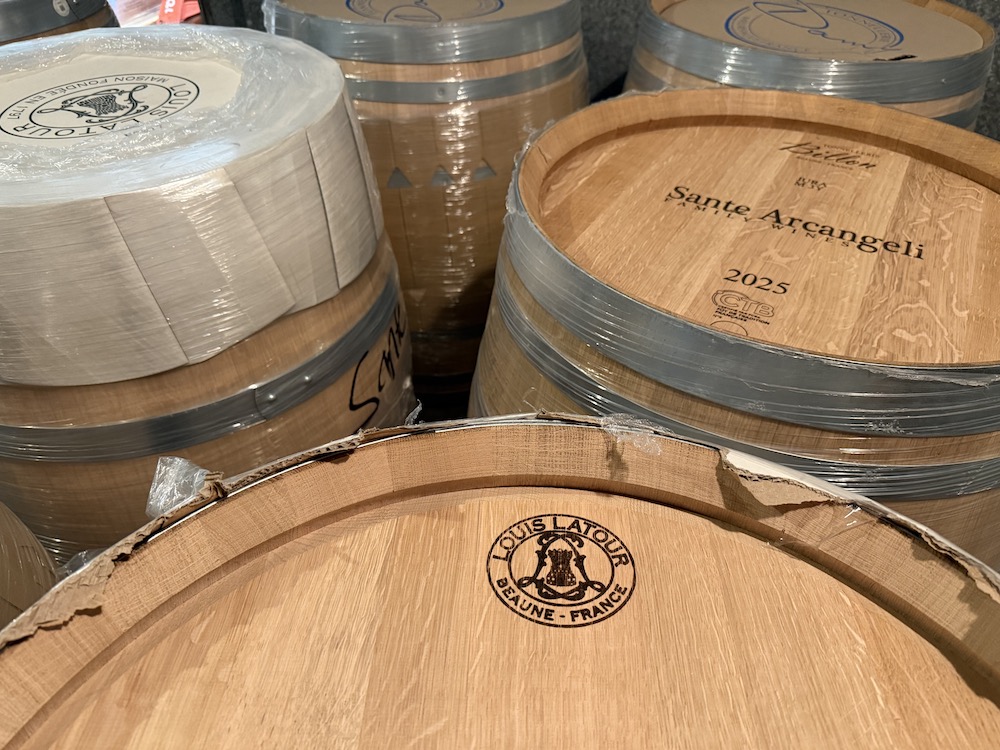
July 4, 2025 – You’ve probably seen a barrel or two if you’ve poked your head into a cellar. Some tasting rooms use them as tabletops, and you might even have a lazy Susan made of one.
Barrels are phenomenally important vessels in wine production. They not only cradle the wine as it ferments and ages, but they impart the personality of the wood (I call it oak juice) directly into the wine.
Some do so more gently than others. This is due to wood sourcing, treatment, aging and toasting, with the latter involving many critical components like time, temperature and technique.
Barrels are a rabbit hole that would fill an entire book, so we’ll keep this as top level as possible. My sources for this story were winemaker Jason Moulton of Whitehall Lane Winery in Napa Valley, Chris Sorensen of Caddis Winery, which started in Livermore and relocated to Sonoma (tasting room in downtown) and John Benedetti of Sante Arcangeli Winery in Aptos.
Winemakers have lots of choices when it comes to barrels. For starters, do they want American oak, French or Hungarian? American oak is favored for its overt vanilla lactones and its price point compared to French barrels. American oak is often used for varieties like Zinfandel, Petite Sirah and even Chardonnay, although some wineries would never use American oak on any of their wines.
Some wineries, like Ridge, have always used American oak from Kentucky for most of the wine production. Other wineries eschew American oak entirely for its overtness, preferring the generally more subtle influence of French oak.
French barrel-making is a high art, with an industry dating back centuries, and many wineries use exclusively French. Hungarian oak is favored by those who want a fairly rapid spice infusion at a much lower price point than French barrels. Hungarian barrels became popular with winemakers who wanted to get their wines into bottle sooner than later. Again, these are gross generalizations.
HEAD SCRATCH
Each barrel head is stamped with important information that coopers (barrel makers) use to impart details about the making and the provenance of that barrel to the winemaker. In the cellar, the winery will generally add their own information, sometimes on 3×5 cards, sometimes with chalk, to indicate what wine they’ve put in the barrel.
Winemaker Chris Sorensen of Caddis Cellars (Sonoma), gave us this general rundown of the info on the barrel head:
- Cooperage Brand (typically at top): Name or logo of the barrel maker (e.g., Tonnellerie François Frères, Baron, Seguin Moreau, Canton etc.)
- Forest Origin (often at bottom): Wood source, meaning the name of the forest, e.g., Allier, Vosges, Tronçais, etc. for French oak
- Toast Level (usually at bottom): Light (LT), Medium (MT), Medium Plus (M+), Heavy (HT)
- Barrel Type (often in liters, not always marked): Size or style (e.g., 225L Barrique, 228L Burgundy, 300L Hogshead)
- Production Year: Year the barrel was made.
- Winery Markings: Logos, vintage, varietal, AVA or unique barrel details added by the winery
Whitehall Lane’s Moulton has narrowed down the coopers he buys barrels from after many years of careful observation and trials, choosing Tonnellerie Baron, Demptos, Seguin Moreau and Sylvain as examples of great coopers with good customer service. Both Demptos and Seguin Moreau have facilities in Napa. “I try to support local businesses as much as possible,” he says.
He shared these three barrels as “decoder rings.”
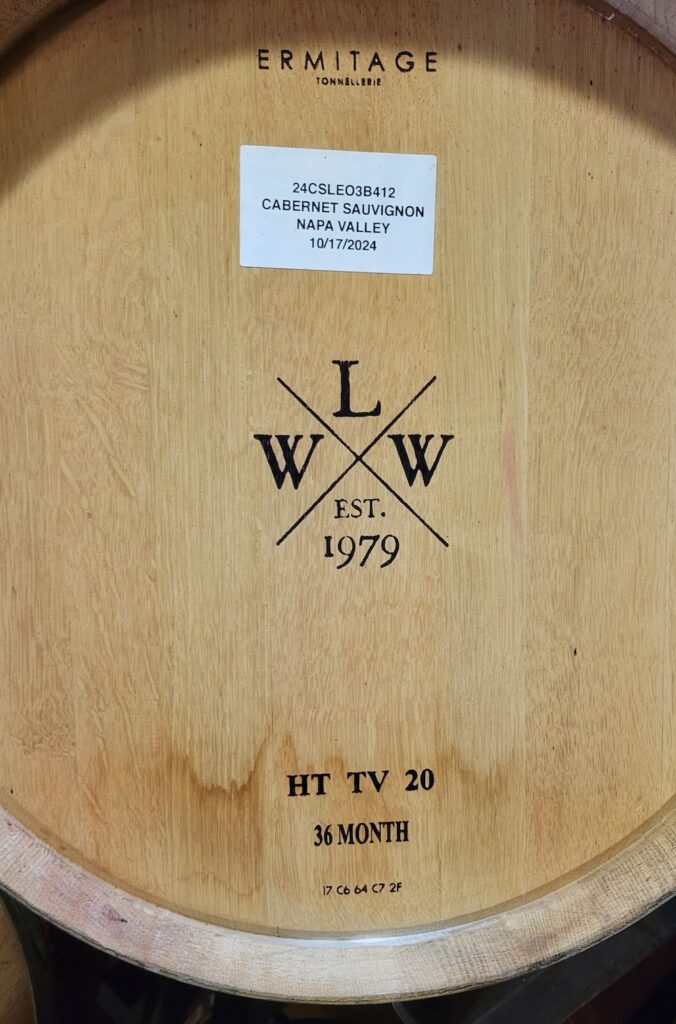
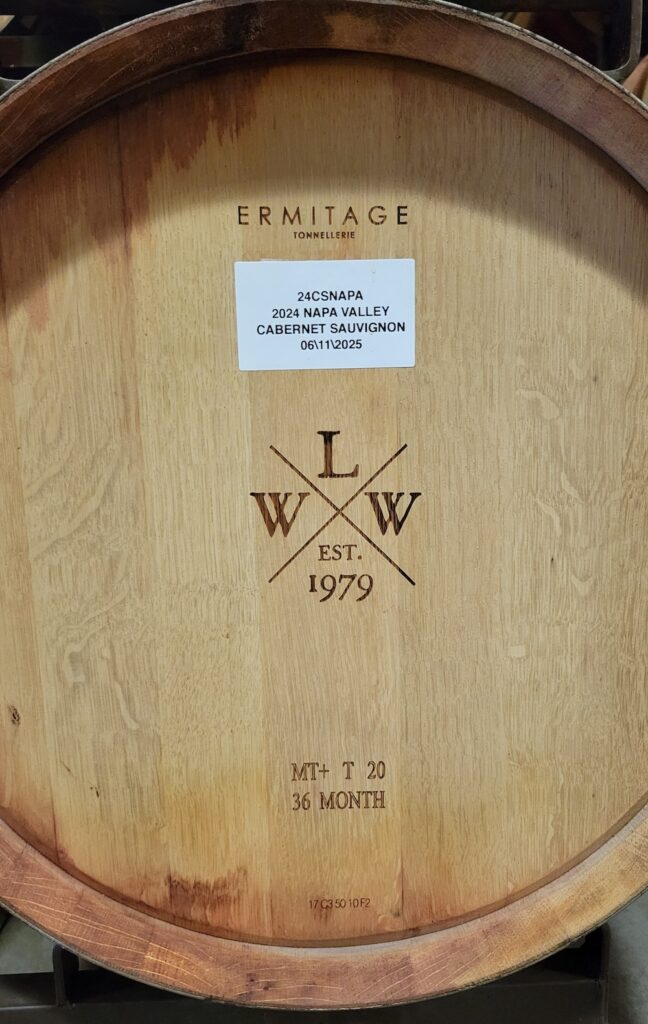
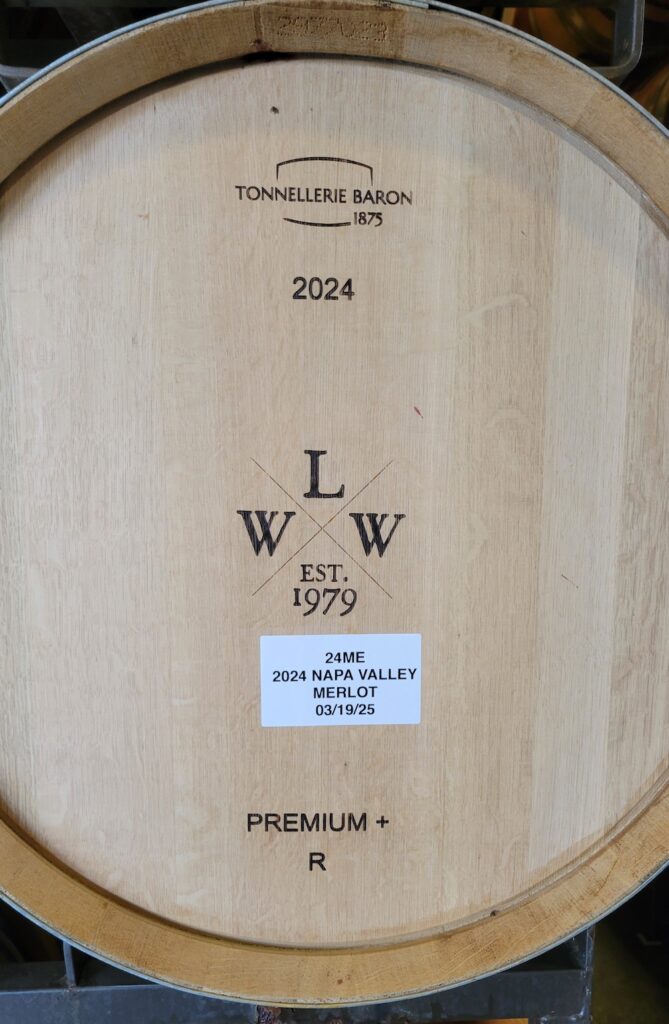
Sorensen says he uses Seguin Moreau and other French oak barrels for his Caddis Cabernet Sauvignon and Merlot, while using Canton barrels for Zinfandel, Malbec, and Petit Verdot. For his Chardonnay, Fumé Blanc, and Grenache Blanc, he uses both new French and American oak.
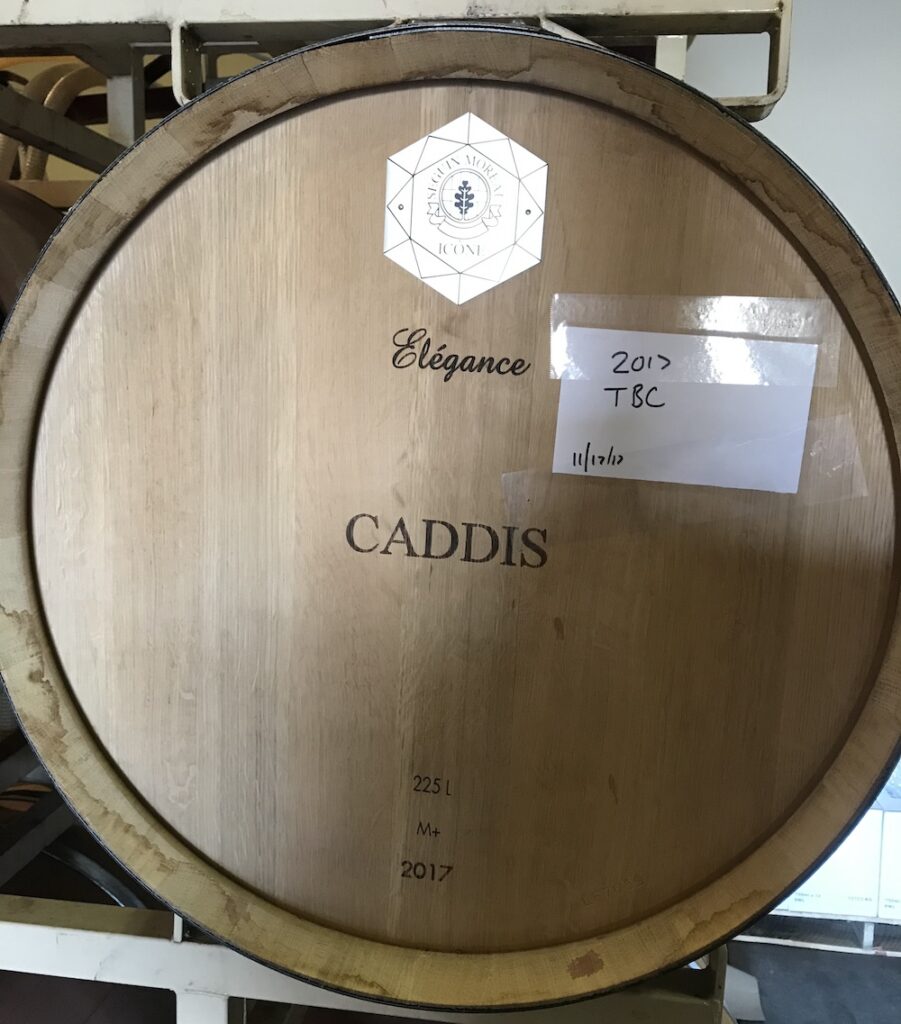
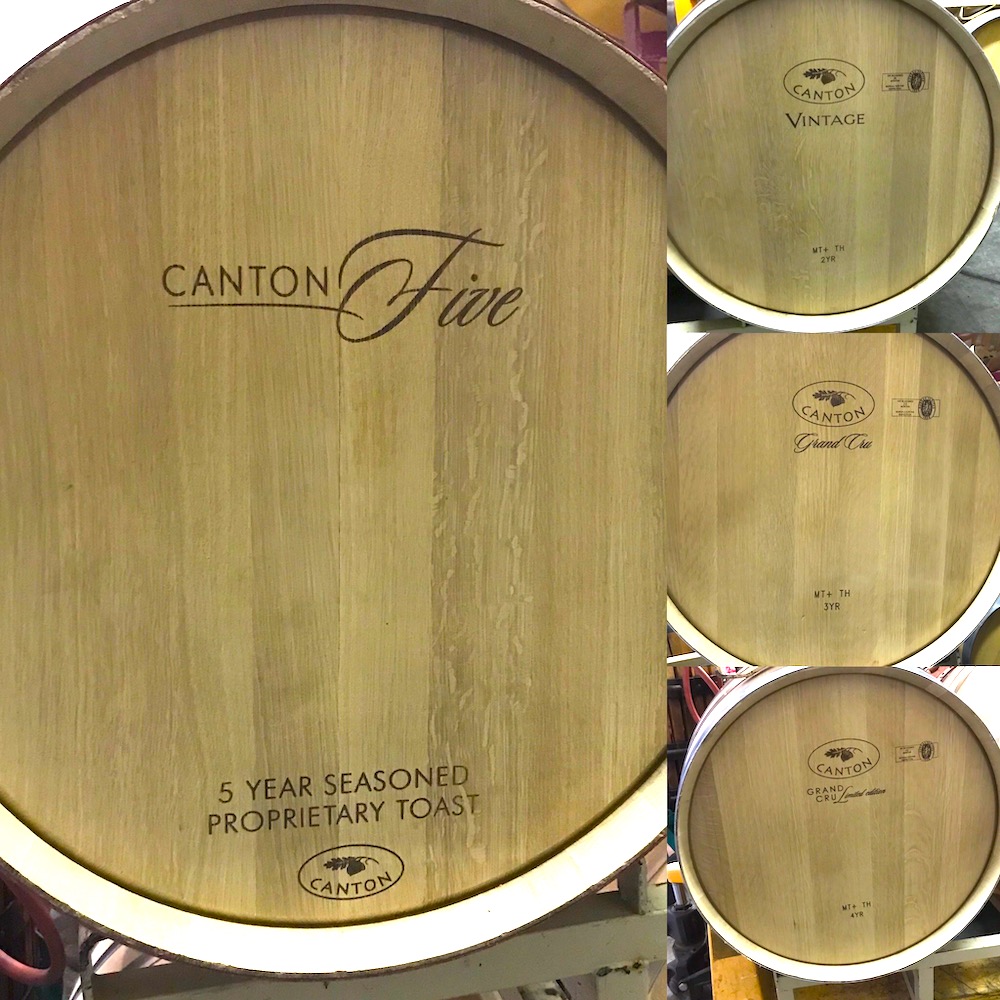
For context, Sorensen shared a photo he took at the Charlois Cooperage in Cloverdale, Calif. last fall, showing bent barrel staves before being turned into barrels.
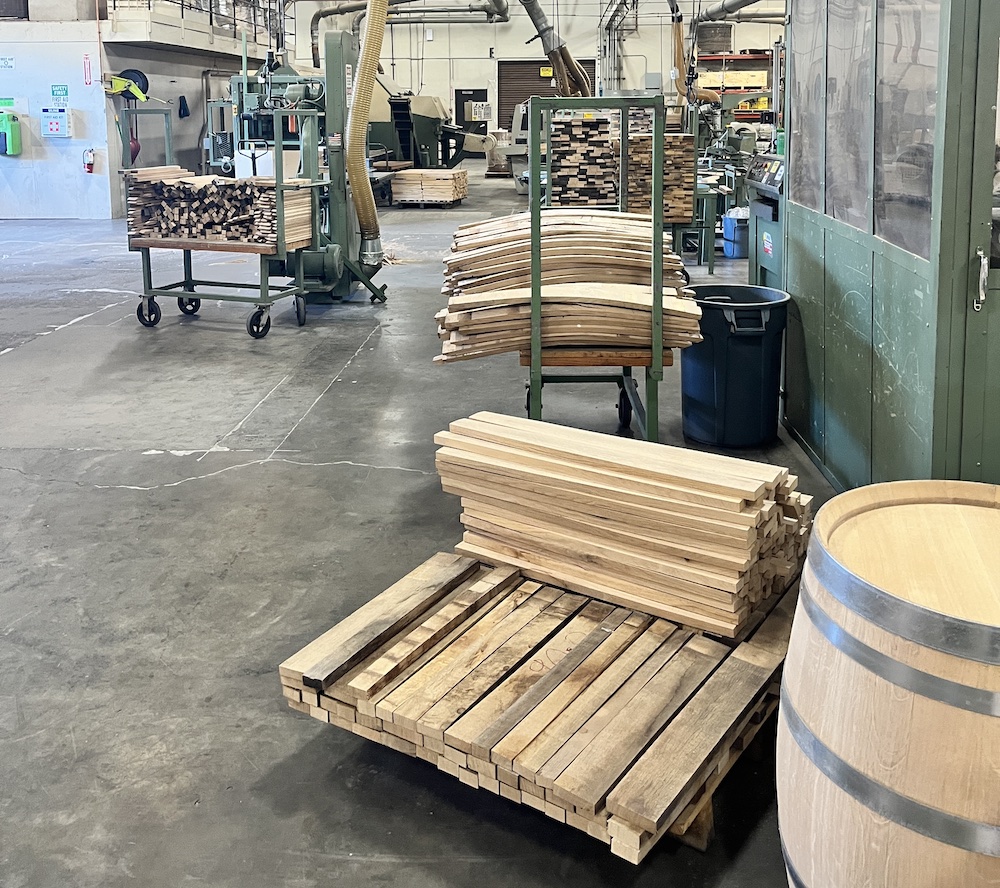
John Benedetti of Sante Arcangeli in Aptos says he had no connections to barrel salespeople when he first started out. He used Mistral barrels as a hobbyist and bought a few Russeau barrels from Brandon Brassfield. He was introduced to TN Coopers through Ryan Beauregard in 2008, and by 2012, he was tasting through James MacPhail’s cellar in Sonoma county and was listening to his recommendations.
“At that point I was experimenting with one barrel at a time or different forests,” says Benedetti. All the samples were from Split Rail Vineyard. In 2012, he says he kept handwritten journals on Tronçais vs Vosges, and all were Ermitage barrels.
He still enjoys the experimental part: “I try one new forest or one new cooperage to dial up the volume on the wines,” says Benedetti. “I like to indulge my curiosity.”
He’s settled on Damy barrels for Chardonnay, at Ryan Beauregard’s recommendation. “It’s pretty aggressive but really clean and delivers a focused oak impact,” he says. “I don’t use a lot of new oak, as I am going for the classic Meursault style.” He notes that Bald Mountain Chardonnay is very acidic like Split Rail.
Would he like to use puncheons? Absolutely, but it’s a question of space. Instead, he’s added a couple of eggs as of last year (2024).
He used one egg for Split Rail Chardonnay and one for Roberts Road (Sangiacomo) Chardonnay and noticed that they enhanced the minerality of both significantly. In the case of Split Rail, too much so, while Roberts Road, with its lower acid, really benefited, as it naturally has much more fruit than minerality. Combining the egg ferments with oak with benefit both, although he’d prefer to use all egg on the Roberts Road.
Like in every aspect of life, relationships with barrel salespeople matter. “It helps if you like the people you work with,” he notes.
At a WOPN seminar earlier this year, Benedetti found himself on a panel with the president of Louis Latour. They hit it off. “Awesome conversations!!” says Benedetti, who was thrilled that his 2021 Split Rail was so widely appreciated by panelists and attendees alike.
When he was offered him proprietary barrels from Latour’s personal stash, Benedetti was floored. “I’ve only ever tasted Latour wines from them,” he says. He’s curious to see how Split Rail Chardonnay and Pinot Noir perform in them.
“Our Split Rail cuttings came from Latour,” says Benedetti. He’s excited to taste the new world expression of old world budwood in barrels designed for the Old World.
The grand barrel experiment goes on. Stay tuned for results.
About the author
Laura Ness is a longtime wine journalist, columnist and judge who contributes regularly to Edible Monterey Bay, Spirited, WineOh.Tv, Los Gatos Magazine and Wine Industry Network, and a variety of consumer publications. Her passion is telling stories about the intriguing characters who inhabit the fascinating world of wine and food.
- Laura Nesshttps://www.ediblemontereybay.com/author/lness/
- Laura Nesshttps://www.ediblemontereybay.com/author/lness/
- Laura Nesshttps://www.ediblemontereybay.com/author/lness/
- Laura Nesshttps://www.ediblemontereybay.com/author/lness/


